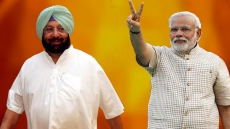India has shortage of an estimated 600,000 doctors and 2 million nurses, say scientists who found that lack of staff who are properly trained in administering antibiotics is preventing patients from accessing live-saving drugs.
Even when antibiotics are available, patients are often unable to afford them. High out-of-pocket medical costs to the patient are compounded by limited government spending for health services, according to the report by the Center for Disease Dynamics, Economics & Policy (CDDEP) in the US.
In India, 65 per cent of health expenditure is out-of-pocket, and such expenditures push some 57 million people into poverty each year.
The majority of the world’s annual 5.7 million antibiotic-treatable deaths occur in low- and middle-income countries where the mortality burden from treatable bacterial infections far exceeds the estimated annual 700,000 deaths from antibiotic-resistant infections.
Researchers at CDDEP in the US conducted stakeholder interviews in Uganda, India, and Germany, and literature reviews to identify key access barriers to antibiotics in low-, middle- and high-income countries.
Health facilities in many low- and middle-income countries are substandard and lack staff who are properly trained in administering antibiotics.
In India, there is one government doctor for every 10,189 people (the World Health Organization recommends a ratio of 1:1,000), or a deficit of 600,000 doctors, and the nurse:patient ratio is 1:483, implying a shortage of two million (20 lakh) nurses.
“Lack of access to antibiotics kills more people currently than does antibiotic resistance, but we have not had a good handle on why these barriers are created,” said Ramanan Laxminarayan, director at CDDEP.
The findings of the report show that even after the discovery of a new antibiotic, regulatory hurdles and substandard health facilities delay or altogether prevent widespread market entry and drug availability,” Laxminarayan said in a statement.
“Our research shows that of 21 new antibiotics entering markets between 1999 and 2014, less than five were registered in most countries in sub-Saharan Africa. Just the mere existence of an effective antibiotic does not mean that they are available in countries where they are most needed,” said Laxminarayan.
Worldwide, the irrational use of antibiotics and poor antimicrobial stewardship lead to treatment failure and propagate the spread of drug resistance which, in turn, further narrows the available array of effective antibiotics.
Research and development for new antimicrobials, vaccines, and diagnostic tests has slowed since the 1960s as profitable investment in this area is limited by low sales volumes, short duration of treatment, competition with established products and less expensive generics, and the possibility that resistance will rapidly emerge.

